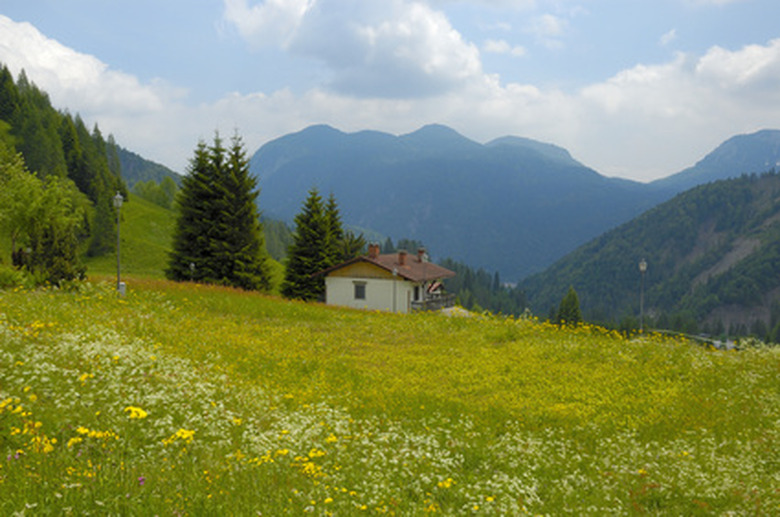Italian Flower Names
The lush green countryside in Italy showcases many fragrant blooms, herbs and plenty of ash trees, which burst into spring-blooming flowers. "Ash tree" translates to "ornella" in Italian. Other floral names in English translate to some interesting and lyrical Italian names.
Antonella
Antonella means "flower." A pet form of Antonious, the name Antonella symbolizes any priceless, flourishing flower because flowers are known for their luminescent grace and beauty.
Angelica
Derived from the Latin word "angelicus," meaning angelic, Italians regarded this flower as protection from the plague because they associated it with the archangel Michael. Drought and frost-resistant, this flower is used for medicinal and culinary purposes. Individuals chew Angelica's sweet leaves to freshen breath.
- The lush green countryside in Italy showcases many fragrant blooms, herbs and plenty of ash trees, which burst into spring-blooming flowers. "
- A pet form of Antonious, the name Antonella symbolizes any priceless, flourishing flower because flowers are known for their luminescent grace and beauty.
Veronica
Also known by the common name "speedwell," Veronica flowers in early summer and continues through autumn. Veronica comes in different forms—small ground huggers to taller clumps in various colors, including pink and lavender. Veronica, derived from the Latin form of "Bernice," comes from the ecclesiastical Latin phrase meaning "true image."
Rosabella
Derived from the Italian words "rosa," meaning "rose," and "bella," which translates to "beautiful," Rosabella equals "beautiful rose." Italians prune their garden roses in late autumn. Fall pruning both in America and Italy allows roses to produce new, tender shoots from their base during the winter.
Ornella
"Ornella" represents a flowering ash tree in Italian. These trees display showy flowers before bursting leaf buds. Termed precocious because of its early-blooming spring flowers, this tree attains heights of 30 to 90 feet.
- Also known by the common name "speedwell," Veronica flowers in early summer and continues through autumn.
- Veronica, derived from the Latin form of "Bernice," comes from the ecclesiastical Latin phrase meaning "true image."
Laura
Connected to the Latin word "laus," or "praise," laurel trees are believed by the Italians to protect against lightning. In ancient Rome, slaves constructed victors' garlands with laurel. Aromatic evergreen trees or large shrubs, these trees reach 33 to 59 feet tall and are native to the Mediterranean region.
Giacinta
"Giacinta" represents the feminine form of hyacinth. "Giancito" translates to the male form of hyacinth. This bloom thrives in the Mediterranean region as well as in Africa. A spring-flowering bulb with long, narrow leaves folded lengthwise, Giacinta sport highly fragrant blooms in dense clusters.
- Connected to the Latin word "laus," or "praise," laurel trees are believed by the Italians to protect against lightning.
Basilo
"Basilo" is the Italian form of basil. In the mint family and commonly used as a culinary herb, Basilo thrives in the Mediterranean region, where it has grown for thousands of years. It also grows wild in tropical and sub-tropical regions.
Narciso
The narcissus flower is a spring-flowering bulb named "Narciso" in Italian. Narcissus and Narciso are derived from the Greek word "narke," which means numbness or stupor. Some equate the naming of the flower with the narcotic fragrance it produces. Others associate the name with the poisonous nature of the narcissus bulb. It contains the alkaloid poison, lycorine. Native to the Mediterranean region, Narciso is mainly cultivated in the isles of Sicilly, Great Britain, the Channel Isles and Holland.
- "Basilo" is the Italian form of basil.
- In the mint family and commonly used as a culinary herb, Basilo thrives in the Mediterranean region, where it has grown for thousands of years.
References
- "100 Flowers and How They Got Their Names"; Diana Wells; 1997
